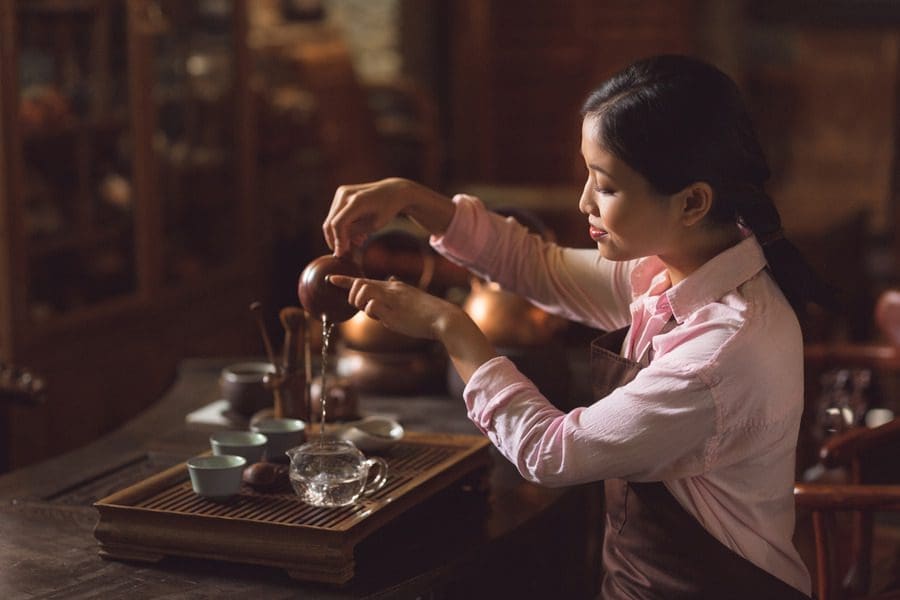If you’re a tea person, you already know that making tea is much more than pouring hot water over a tea bag. In fact, when you create the ultimate setting, drinking tea can offer a space for you to reflect, practice mindfulness, and reach new levels of intention. This is otherwise known as creating a tea ritual. Let’s dive a little deeper.
A Brief History of Tea Rituals
It is believed that tea ceremonies date back to the Tang Dynasty (AD 618-907), when tea was viewed as more of a social drink. The tradition originated in Chinese Buddhist monasteries, where it was often used for medicinal purposes and to ward off drowsiness.
Tea rituals have also been a huge part of Japanese culture for about 500 years, though the process is slightly different. In Japanese culture, special attention is given to brewing, serving, and drinking tea, but architecture, landscape, ceramics, painting, flower arranging, and cooking are also part of the ritual.
Tea rituals are still widely practiced for both social and spiritual reasons. Over centuries, people still gather and enjoy the company and aesthetics.
How to Incorporate a Tea Ritual Into Your Life
Establishing your own tea ritual will encourage you to slow down, practice mindfulness, strengthen your immune system, and decrease depression. The best part? Your tea ritual doesn’t have to take long or be elaborate. If you can spare 15 minutes, you can have a tea ritual.
What You’ll Need
Here are some basic materials you’ll need as a beginner. As you learn about rituals, your tools can become more authentic and purposeful.
- Quality loose-leaf tea is essential so that your tea tastes and smells good and creates a pleasurable holistic experience.
- Clean water will bring out all of the flavors in your tea.
- There are many ways to heat water, but a gooseneck kettle is recommended because of its long spout, allowing a gentle pour to awaken the tea leaves instead of shocking them.
- Teacups are the vessels that hold the tea. While we tend to be drawn to large mugs for tea rituals, small cups that allow you to taste all the flavors are recommended.
- A tea scoop, one made of bamboo preferably, will be used for each ritual.
- You’ll need a teapot, of course. The smaller the pot, the more concentrated the flavor.
- Last, you’ll want to acquire a fairness pitcher if you plan on brewing your leaves multiple times. A fairness pitcher allows each brew to be enjoyed, which is especially important if two or more people participate in the ritual.
Steps of a Tea Ritual
Step 1: Prep
Gather your supplies, take a deep breath, and understand that the next few moments are all about you. The more you practice tea rituals, the more accustomed you should become to naturally calming down as you prep.
Step 2: Scoop Tea
Use your scoop to add tea to your teapot.
Step 3: Heat Your Water
We recommend using filtered or mineral water for purer tea.
Step 4: Pour Boiling Water Into Your Teapot
Use small circular motions to allow your leaves to gently wake up. Many people throw out the first brew because the leaves haven’t woken up yet. Leave water in the pot for a few seconds, pour it out, then fill it again while the leaves are still warm to really experience what they offer.
Step 5: Pour Tea Into a Fairness Pitcher
This catches any tea debris and lets you smell your tea, note steep times, notice the color, and become acquainted with what you’ve made.
Step 6: Pour from Fairness Pitcher
All that’s left to do now is smell and sip. Some people like to keep a tea journal to jot down notes about their experiences.
Step 7: Practice Your Ritual Regularly
This healthy habit forces you to slow down and romanticize this part of your daily life.






